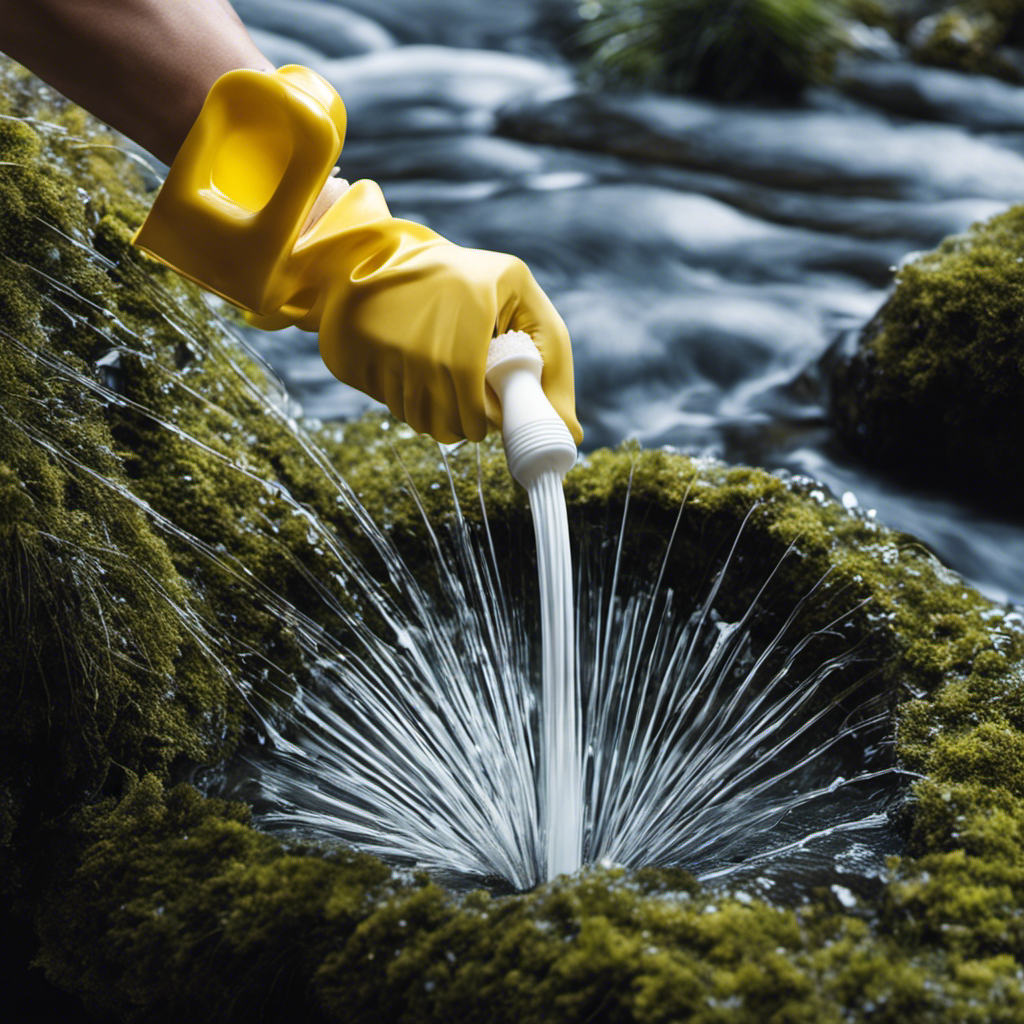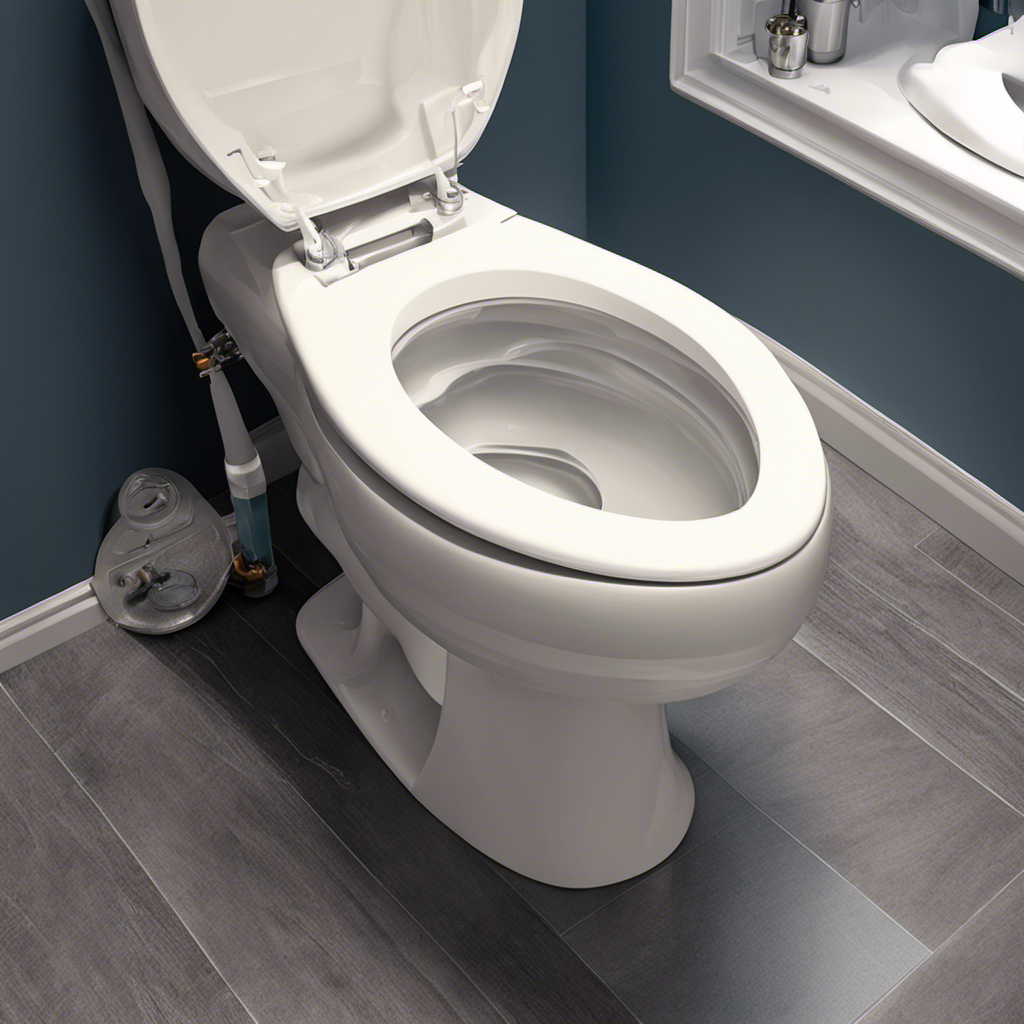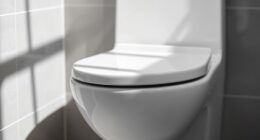Are you aware of the astronomical amount your water bill can rise due to a running toilet?
Discover the detrimental impact of this common household issue on your water consumption. By calculating the potential increase in water usage and understanding the financial consequences, you can take control of your expenses.
Learn about the factors affecting the amount of water wasted and pick up valuable tips for detecting and fixing a running toilet.
Lower your water bill today by addressing this wasteful problem head-on.
Key Takeaways
- A running toilet can waste up to 200 gallons of water per day, leading to excessive water consumption and increased water bills.
- Promptly addressing a running toilet is crucial for water conservation and cost-saving.
- Accurately estimating the impact on water bills requires calculating potential water usage increase.
- Implementing water conservation measures, such as fixing leaks and using water-efficient appliances, can lead to significant savings and prevent water wastage.
The Impact of a Running Toilet on Water Consumption
A running toilet can significantly increase your water consumption and, consequently, your water bill. Understanding its impact on water conservation is crucial in implementing cost-saving measures.
When a toilet is running, it means that water is continuously flowing from the tank into the bowl, even when it is not in use. This constant flow can waste a substantial amount of water over time. To put it into perspective, a running toilet can waste up to 200 gallons of water per day. This excess water usage not only negatively affects the environment but also leads to higher water bills.
Therefore, it is essential to address this issue promptly to conserve water and save money.
Transitioning into the subsequent section, let’s now calculate the potential increase in water usage caused by a running toilet.
Calculating the Potential Increase in Water Usage
In order to accurately estimate the impact on your water bill, it’s important to calculate the potential increase in water usage.
By identifying the key points and factors that contribute to excessive water usage, you can take proactive steps to prevent wastage and save on your monthly bill.
Understanding how to estimate water bill impact and implementing measures to prevent excessive water usage will help you maintain efficient water consumption and reduce costs in the long run.
Estimating Water Bill Impact
To estimate the impact on your water bill, you can use an online calculator. These calculators are designed to help you determine the potential savings you can achieve by implementing water conservation measures.
Here are five potential water conservation measures that can lead to significant savings:
-
Installing low-flow showerheads and faucets: These fixtures reduce water consumption while maintaining water pressure, resulting in less water waste.
-
Fixing leaks promptly: A dripping faucet or a running toilet can waste gallons of water per day, quickly driving up your water bill.
-
Using efficient appliances: Upgrading to Energy Star-rated washing machines and dishwashers can significantly reduce water usage.
-
Collecting rainwater for outdoor use: This sustainable practice helps conserve water and reduces the need for using treated water for gardening or other outdoor activities.
-
Implementing smart irrigation systems: These systems use weather data to adjust watering schedules, ensuring that your plants receive the right amount of water without wastage.
Preventing Excessive Water Usage
By fixing leaks promptly and using efficient appliances, you can significantly reduce your water usage and contribute to a more sustainable future.
Water saving techniques and water conservation strategies play a crucial role in preventing excessive water usage. One effective technique is to regularly check your plumbing system for leaks and promptly fix them. A small leak in a faucet or toilet can waste a significant amount of water over time.
Another strategy is to install water-efficient appliances such as low-flow showerheads and toilets. These appliances are designed to use less water without compromising performance.
Additionally, practicing mindful water habits like turning off the faucet while brushing your teeth or collecting rainwater for outdoor use can further reduce your water consumption.
Understanding the Financial Consequences of a Running Toilet
When it comes to the subtopic of excessive water usage, escalating monthly expenses, and the environmental impact of waste, there are several key points to consider.
First, excessive water usage can lead to a significant increase in monthly expenses, especially if it goes unnoticed or unaddressed. This can result in higher water bills and a strain on your budget.
Additionally, the environmental impact of waste can be substantial, as water is a finite resource and wasting it unnecessarily contributes to water scarcity and ecological damage.
It is crucial to understand the consequences of excessive water usage, both financially and environmentally, in order to make informed decisions and take necessary actions to conserve water and reduce waste.
Excessive Water Usage
Excessive water usage can significantly increase your water bill if you have a running toilet. A running toilet is a common problem that can waste a substantial amount of water, leading to higher bills and unnecessary expenses.
To help you understand the importance of water conservation and the impact of a running toilet on your finances, consider the following:
- � Every minute a running toilet wastes up to 2 gallons of water.
- � A running toilet can waste over 100 gallons of water per day.
- � This wasted water adds up quickly, leading to higher water bills.
- � Fixing a running toilet is a simple and cost-effective solution.
- � Implementing water-saving techniques can help reduce your overall water usage and save money.
Escalating Monthly Expenses
If you want to reduce your water consumption and avoid escalating monthly expenses, it is crucial to find hidden water leaks in your home. These leaks can go unnoticed for weeks or even months, resulting in a significant increase in your water bill.
To tackle this issue, start by checking all the water fixtures in your house, such as toilets, faucets, and showers, for any signs of leakage. It is also recommended to monitor your water meter regularly to identify any sudden spikes in usage. Additionally, consider installing leak detection devices that can alert you to any leaks in real-time.
By taking these proactive measures, you can prevent wastage and save money on your water bill.
Now, let’s explore the environmental impact of waste and how it affects our planet.
Environmental Impact of Waste
To reduce your environmental impact, it’s important to be mindful of how much waste you generate and find ways to minimize it. Environmental conservation and sustainable waste management are crucial for preserving our planet’s resources.
Here are five key actions you can take to make a positive impact:
-
Recycle: Separate your recyclable materials from your regular waste and ensure they are properly disposed of.
-
Compost: Instead of throwing organic waste in the trash, create a compost pile to turn it into nutrient-rich soil.
-
Use reusable products: Opt for reusable items like water bottles, shopping bags, and coffee cups to reduce single-use waste.
-
Donate or sell items: Instead of throwing away unwanted items, consider donating or selling them to give them a second life.
-
Reduce packaging waste: Choose products with minimal packaging and avoid single-use plastics whenever possible.
Factors Affecting the Amount of Water Wasted by a Running Toilet
You can determine the factors that affect the amount of water wasted by a running toilet. Understanding these factors is crucial for water conservation and avoiding the consequences of ignoring a running toilet. Several factors contribute to the water wastage, including:
| Factor | Description |
|---|---|
| Flapper Valve | A worn-out flapper valve can cause water to continuously flow into the toilet bowl, resulting in wastage. |
| Float Valve | A faulty float valve may not shut off the water supply properly, leading to constant water flow. |
| Water Pressure | High water pressure can cause water to leak from various parts of the toilet, increasing wastage. |
| Toilet Design | Some toilet designs are more prone to leaks and inefficiencies, resulting in higher water usage. |
Tips for Detecting and Fixing a Running Toilet
Now that we’ve discussed the factors that contribute to water wastage in a running toilet, let’s explore some tips for detecting and fixing this issue.
Here are some steps you can take to troubleshoot toilet issues and detect leaks:
-
Check the water level: If the water level in your toilet bowl is constantly fluctuating or too high, it could indicate a problem.
-
Listen for sounds: Pay attention to any unusual sounds, such as constant running water or hissing noises, which may point to a leak.
-
Inspect the flapper: The flapper is a rubber valve that controls the flow of water from the tank to the bowl. Check for any signs of wear or damage.
-
Test the flush valve: The flush valve is responsible for releasing water from the tank into the bowl. Make sure it is functioning properly.
-
Use food coloring: Drop a few drops of food coloring into the tank and wait for about 30 minutes. If the color appears in the bowl, it means there is a leak.
How to Lower Your Water Bill by Addressing a Running Toilet
Addressing a running toilet can result in significant savings on your monthly water expenses. Lowering water consumption is essential for both environmental and financial reasons.
To conserve water and reduce your water bill, it is crucial to fix any leaks or running toilets promptly. A running toilet can waste hundreds of gallons of water per day, leading to a substantial increase in your water bill.
To address a running toilet, start by checking the flapper valve, which is often the culprit. It may be worn out or misaligned, causing water to continuously flow into the bowl. Another common issue is a faulty fill valve, which can be adjusted or replaced to prevent water from overflowing and wasting.
Conclusion
In conclusion, don’t underestimate the impact of a running toilet on your water bill. By addressing this issue promptly, you can prevent unnecessary water consumption and save money in the long run.
Remember to regularly check and fix any leaks or malfunctions to reduce water wastage. By taking these simple steps, you can ensure a more efficient and cost-effective plumbing system.
So, don’t let a running toilet drain your wallet – take action today!










